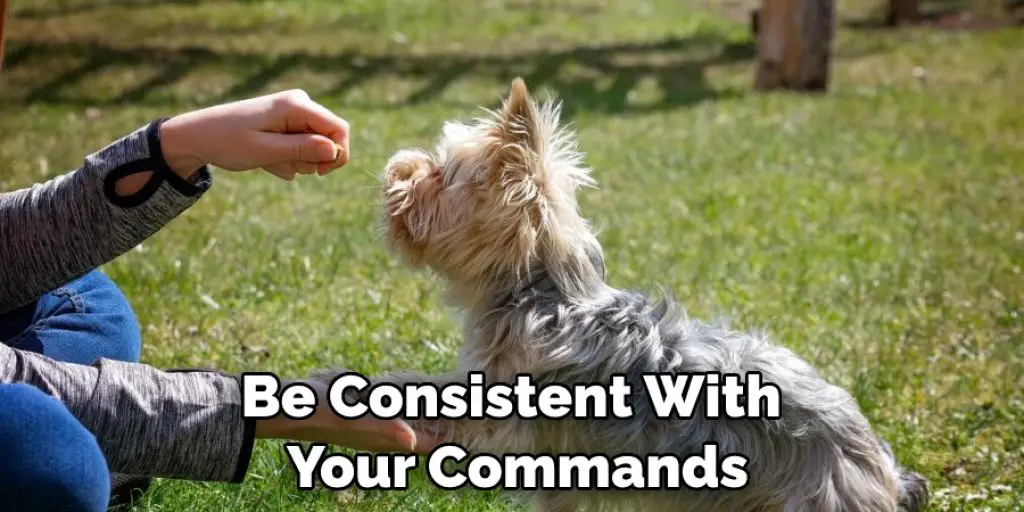Training a westie is not as difficult as one may think. With the right approach and some patience, your westie will be the best-behaved dog you have ever seen. In this post, we will outline the basic steps of how to train a westie so that you can enjoy a well-behaved dog without any trouble.

Contents
What Is Westie?
Westie dog is a small-sizedTerrierthat originally came from Scotland. It has a muscular body with short legs. The most notable feature of this dog is its white coat, which is why it’s also sometimes called the “West Highland White Terrier.” The Westie is an active and friendly breed that loves to play and has a lot of energy.
They are also very smart and quick learners, which makes them great companions. Westies are generally good with kids and other animals, but they can sometimes be a little stubborn. Overall, Westies are great family dogs that will bring great joy to your home.
Why Should You Train Your Westie?
A well-trained dog is a joy to live with. They know the rules and behave accordingly, making life much easier for their owners. But what about Westies? Why should you take the time to train your Westie?
There are several reasons why training your Westie is a good idea. First, it will help them to understand what you expect from them. This is important because it will prevent misunderstandings and frustration on both your parts. Second, training will help your Westie to socialize better. They will learn how to interact with other dogs and people, making them more well-rounded and confident.
Finally, training will give you a chance to bond with your Westie. You’ll spend time together working on obedience exercises and tricks; this shared experience will strengthen your bond. So if you’re wondering whether or not to train your Westie, the answer is a resounding yes!

8 Ways to Follow on How to Train a Westie
Suppose you’re thinking of getting a westie or have already welcomed one into your home; congratulations! You’re in for a lot of fun. Westies are known for their spunky personalities and boundless energy. But with that comes the need for training and socialization. Here are eight tips on how to train a westie so that you can enjoy a well-behaved pup.
1. Start with The Basics- Sit, Stay, Come
Like with any training, you’ll want to start with the basics. Commands such as sit, stay, come, down, and off are essential for a well-behaved dog. Not only will these commands keep your pup safe, but they’ll also be very useful in everyday life. Westies are quick learners, so once you’ve got the hang of things, you can move on to more advanced tricks.
2. Be Consistent with Your Commands
It’s important to be consistent when giving commands to your westie. If you sometimes let them off the leash when they’re not supposed to or let them have a treat when they beg for one, they’ll quickly learn that there are no rules they need to follow. Be consistent with your commands and always enforce them.
3. Use Positive Reinforcement Methods
Positive reinforcement is a great way to train any dog, and westies are no exception. When your pup does something you’ve asked them to do, be sure to give them lots of praise and rewards. This will let them know they’re on the right track and encourage them to keep up the good work.
4. Keep Training Sessions Short and Sweet
Training sessions should be kept short so as not to overwhelm your pup. Westies have short attention spans, so it’s important to keep things interesting. Around 10-15 minutes per session is usually plenty of time.

5. Be Aware of Your Tone of Voice
Your tone of voice can be just as important as the words you use when giving commands. Your dog will likely pick up on that and become agitated if you sound angry or frustrated. Instead, try to keep a calm and positive tone, so your pup stays relaxed.
6. Be Patient
Training takes time and patience, so it’s important not to get discouraged if things aren’t progressing as quickly as you’d like. Rome wasn’t built in a day, nor is it a well-trained westie. Just take things one step at a time, and eventually, you’ll get there.
7. Reward Good Behavior
As mentioned before, rewards are a great way to motivate your pup. When they do something right, be sure to give them lots of praise and a tasty treat. This will let them know that they’re on the right track and encourage them to keep up the good work.
8. Never Give Up
Training is an ongoing process, so don’t get complacent even if things seem to be going well. Always be on the lookout for ways to improve your pup’s behavior. And if you ever feel like you’re at a loss, there’s no shame in seeking out professional help. A qualified dog trainer can give you the tools you need to succeed.
Following these tips on how to train a westie should set you well on your way to having a happy and well-behaved pup. Just remember to be patient, consistent, and use positive reinforcement, and you’ll be well on your way to success.

The Importance of Training a Westie
Training a Westie is important for several reasons. First, it helps establish the house’s rules and gives the dog a sense of structure. Secondly, it helps to socialize the dog and prevent problem behaviors from developing. Finally, it provides a great opportunity for bonding with your pet. Training should start as soon as possible after bringing your Westie home.
Puppy classes are a great way to get started and can give you the tools you need to continue training at home. Crate training is also important, as it will help your Westie feel comfortable and secure in their new environment. With patience and consistency, you can train your Westie to be a well-mannered companion that you can enjoy for many years to come.
How to Potty Train Your Westie
Westies are intelligent, independent dogs that are relatively easy to potty train. The key to success is to be consistent and patient. Here are a few tips to get you started:
1. Choose a designated potty area and take your Westie there regularly, especially after meals and naps.
2. Reward your dog for going in the designated area with treats or praise.
3. Never punish your Westie for accidents; this will only cause confusion and anxiety.
4. Be patient; your Westie may take several weeks or even months to learn the new rules.
With consistency and patience, you will soon have a well-trained Westie who knows where to go when nature calls! Keep reading for more information about how to train a westie.
How to Deal with Behavioral Issues Like Separation Anxiety and Aggression
Suppose your dog is displaying behaviors like separation anxiety or aggression. In that case, it’s important to take action to ensure their safety and well-being and the safety of those around them. Separation anxiety can manifest in several ways, including barking, chewing, and destructiveness. Dogs with separation anxiety may also try to escape from their crates or yards.
Meanwhile, aggression can be directed towards people or other animals. It’s important to note that aggression is often rooted in fear, so addressing the behavior with patience and understanding is important. If you’re unsure how to deal with your dog’s behavioral issues, several resources are available, including books, websites, and even animal behaviorists. With a little time and effort, you can help your dog overcome their anxieties and live a happy, healthy life.
How to Make Sure Your Westie Stays Healthy and Happy
As any dog owner knows, keeping your furry friend healthy and happy is crucial. But when it comes to Westies, you need to consider a few extra things. First of all, Westies are prone to a condition called dry eye, which can cause serious irritation and inflammation. So keep an eye out for symptoms like excessive tearing or redness, and take your Westie to the vet if you notice anything unusual.
Secondly, Westies are also susceptible to skin cancer called mast cell tumors. These tumors can grow anywhere on the body, but they’re most commonly found on the belly or inside the legs. So again, keep an eye out for any lumps or bumps, and have your Westie checked by a vet if you notice anything out of the norm.

Lastly, Westies are notorious escape artists, so it’s important to make sure your home is secure. Keep gates, and doors closed, and consider investing in a fence if you don’t already have one. Taking these simple precautions can help ensure that your Westie stays healthy and happy for years to come.
Conclusion
A Westie may be the perfect dog for you if you’re looking for an adorable yet spunky addition to your family. With a little bit of training, these dogs can be wonderful companions who will make you laugh and keep you active. But, of course, training your new pup is key to having a happy and well-adjusted pet, so get started today! Thanks for reading our post about how to train a westie.

